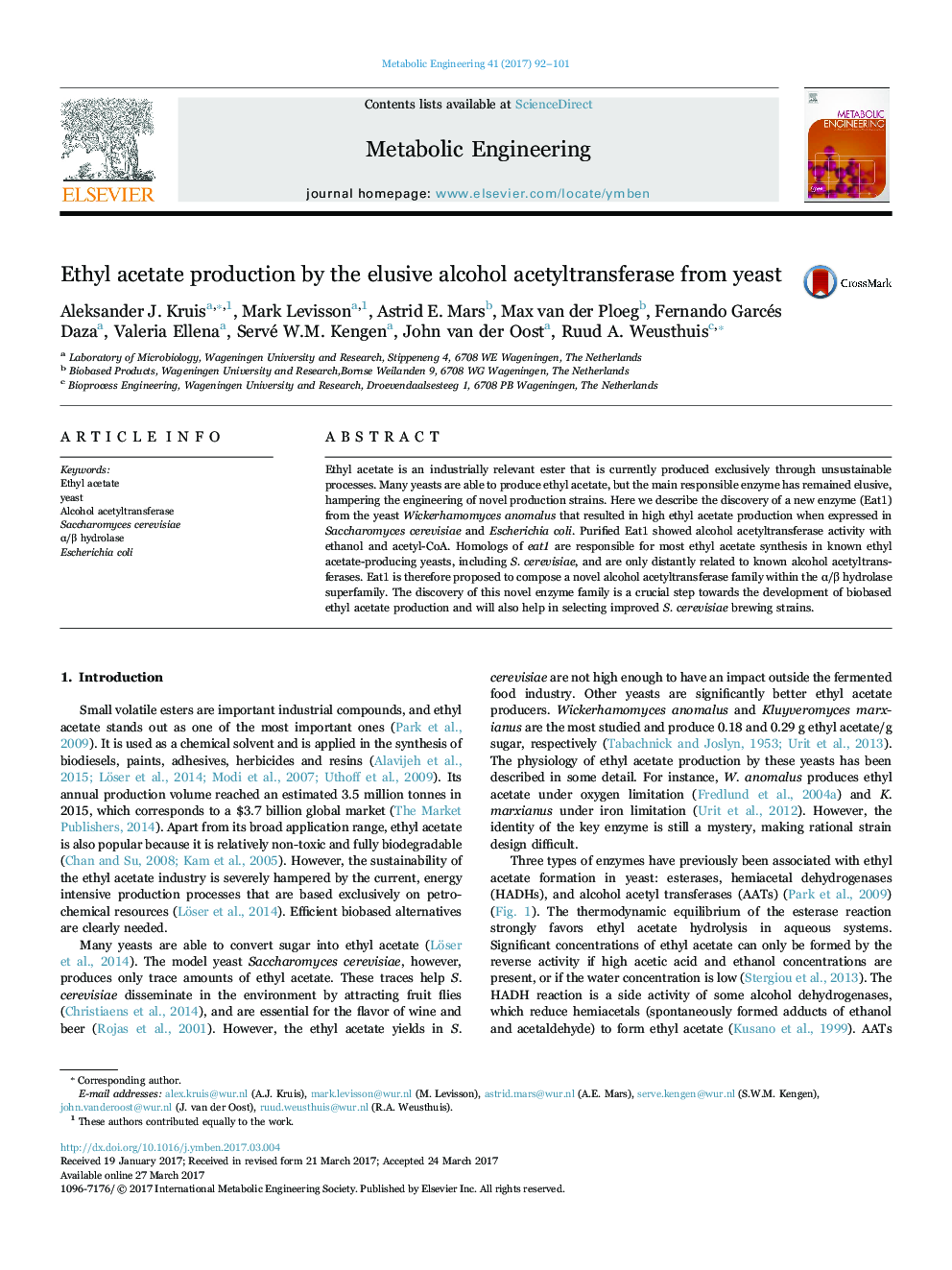| Article ID | Journal | Published Year | Pages | File Type |
|---|---|---|---|---|
| 6452678 | Metabolic Engineering | 2017 | 10 Pages |
â¢Eat1 represents a novel ethyl acetate-producing enzyme family which has remained unidentified for decadesâ¢Eat1 led to the highest ethyl acetate production in S. cerevisiae and E. coli reported to dateâ¢The Eat1 family is responsible for ethyl acetate production in all high ethyl acetate producing yeast species with a known genome sequenceâ¢Homologs of Eat1 are responsible for 50% of the ethyl acetate synthesis in the brewing yeast S. cerevisiaeâ¢Identification of Eat1 will enable rational engineering of ethyl acetate producing hosts.
Ethyl acetate is an industrially relevant ester that is currently produced exclusively through unsustainable processes. Many yeasts are able to produce ethyl acetate, but the main responsible enzyme has remained elusive, hampering the engineering of novel production strains. Here we describe the discovery of a new enzyme (Eat1) from the yeast Wickerhamomyces anomalus that resulted in high ethyl acetate production when expressed in Saccharomyces cerevisiae and Escherichia coli. Purified Eat1 showed alcohol acetyltransferase activity with ethanol and acetyl-CoA. Homologs of eat1 are responsible for most ethyl acetate synthesis in known ethyl acetate-producing yeasts, including S. cerevisiae, and are only distantly related to known alcohol acetyltransferases. Eat1 is therefore proposed to compose a novel alcohol acetyltransferase family within the α/β hydrolase superfamily. The discovery of this novel enzyme family is a crucial step towards the development of biobased ethyl acetate production and will also help in selecting improved S. cerevisiae brewing strains.
